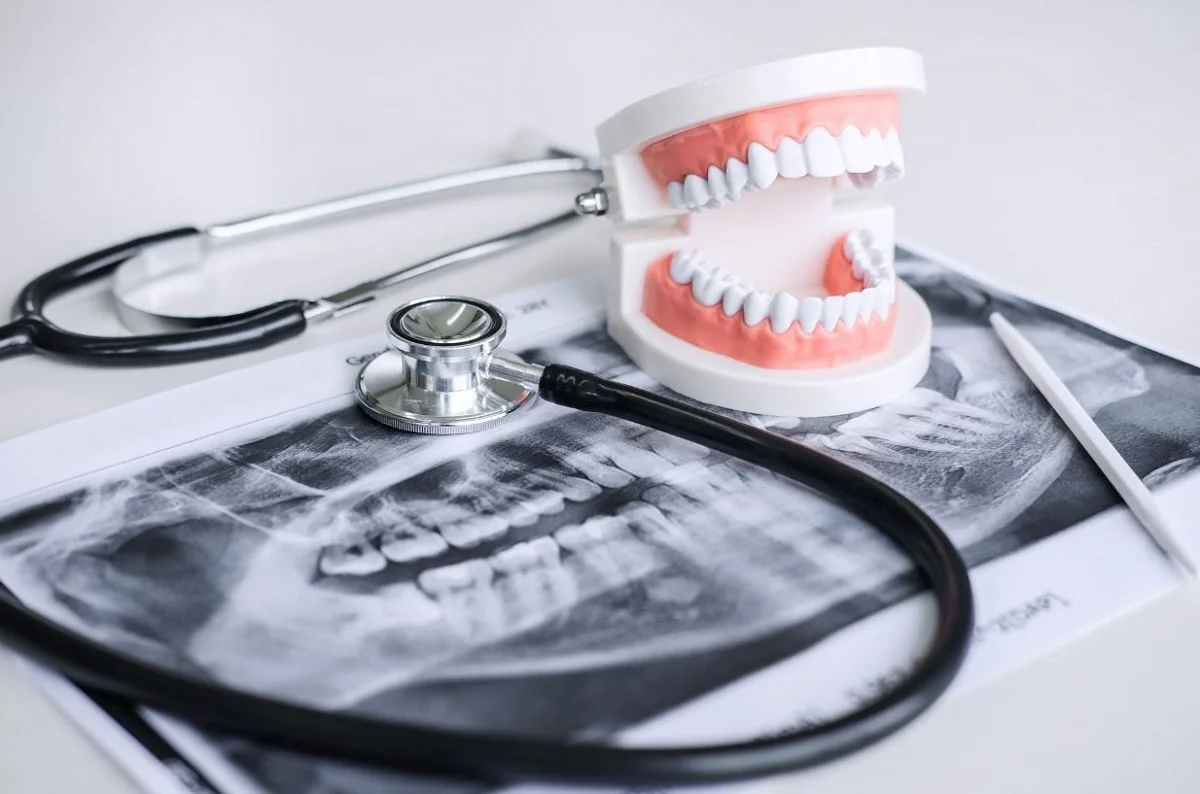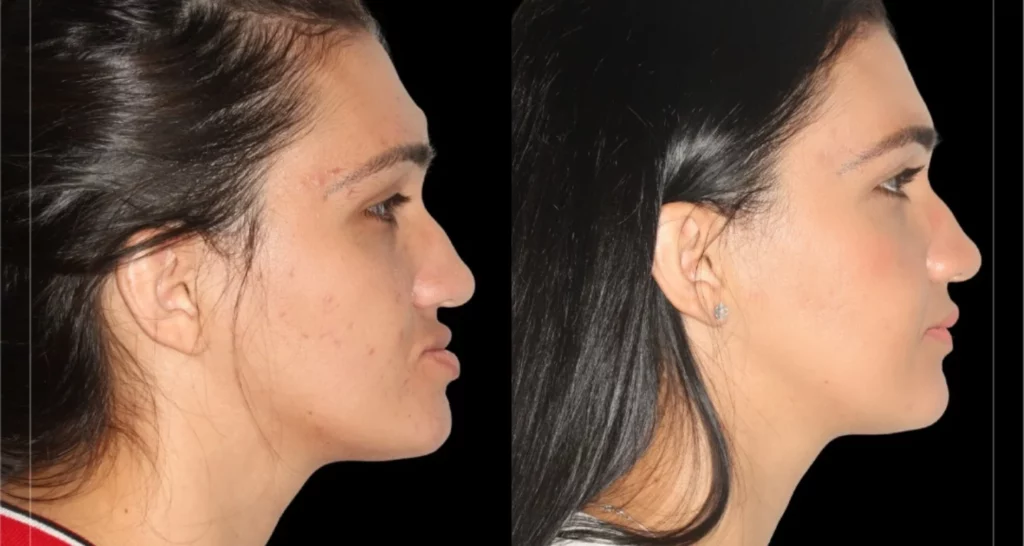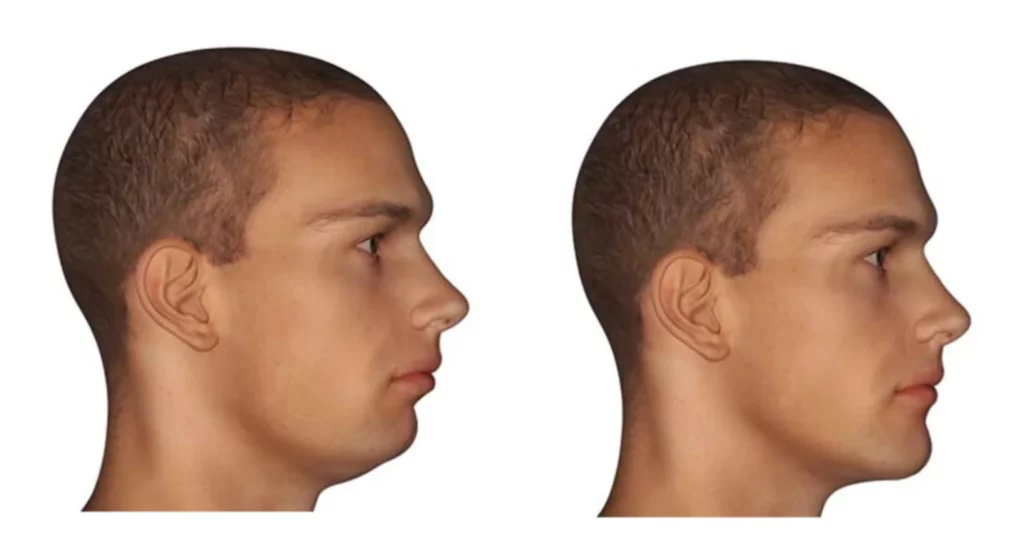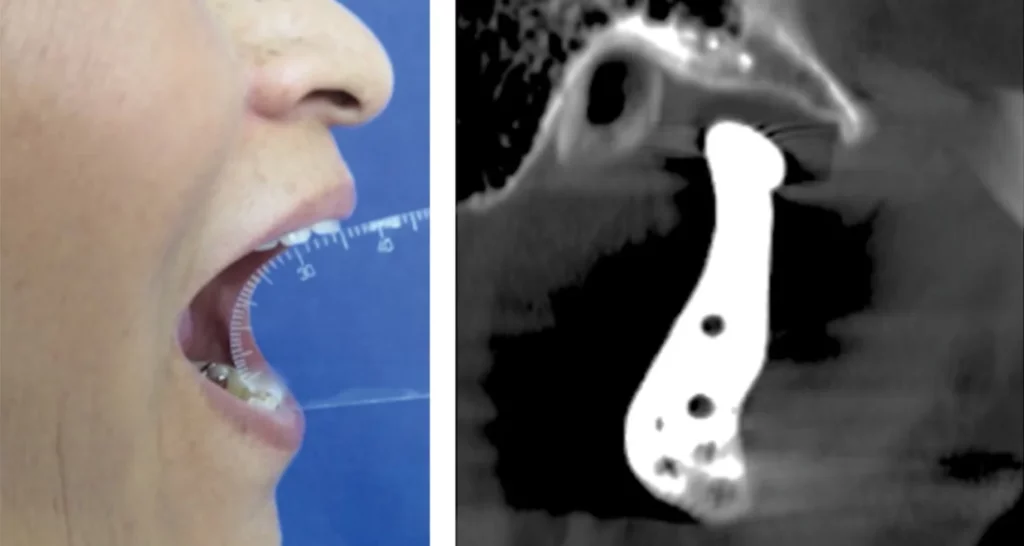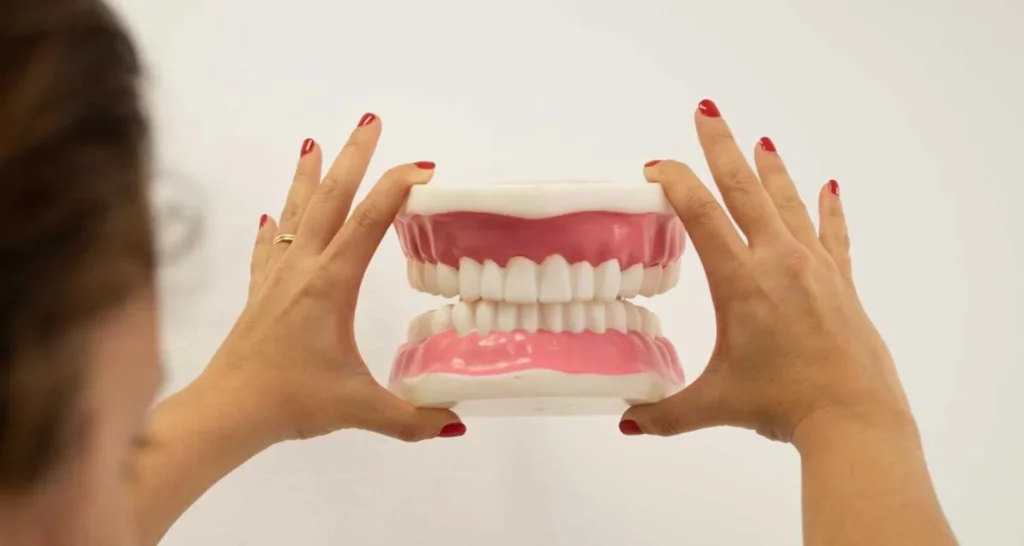Last Updated on: 11th December 2025, 10:19 am
The beauty of a face lies in its balance and harmony; but for some, dental malocclusions or jaw deformities can destroy, affecting functionality and overall quality of life. Fortunately, corrective procedures can restore proper function and appearance to the maxillofacial structures. Now, we will discover the fascinating world of orthognathic surgery, the most used techniques, Types of jaw surgery and how they contribute to improving your health, aesthetics, and quality of life.
What is orthognathic surgery?
Orthognathic surgery, from the Greek “orthos” meaning “straight” and “gnathos” meaning “jaw,” is a subspecialty of maxillofacial surgery that focuses on correcting deformities and misalignments of the jaws. Through intraoral incisions, surgeons can modify or reposition the upper and lower jaws, fixing them with plates and screws, if necessary. With orthognathic surgery, the aim is to restore an adequate bite, facial harmony, and full respiratory function.
Orthognathic surgery: Types of jaw surgery
There are several Types of jaw surgery, with specific procedures for different situations. Below, we will explore some of the most common techniques used in orthognathic surgery:
1. Osteotomy:
Thi is a very useful procedure to treat size or position anomalies of the jaws. An osteotomy involves making controlled cuts in the jaw bones, allowing surgeons to precisely reposition them. These cuts are usually made through intraoral incisions to minimize visible scarring. The osteotomy can be limited to the upper or lower jaw, or performed in both jaws. The latter is known as bimaxillary osteotomy and is performed when the intervention in one of the two jaws is not enough to correct the alteration. Osteotomies can be of two types:
1. Advancement osteotomy:
Advancement surgery involves moving one or both upper or lower jaws forward. This approach is used to correct bite problems and improve facial aesthetics. For example, in the case of a retruded jaw, jaw advancement surgery can reposition it to properly align with the upper jaw.
2. Setback osteotomy:
Reverse surgery is the opposite process of forward surgery. It is used when one or both jaws must be repositioned backward. This may be necessary to correct an increased overbite.
2. Genioplasty:
It is a procedure that focuses on the remodeling or realignment of the chin. It is often performed to correct facial asymmetries, improve the aesthetics of the jaw, or resolve problems with retrusion or protrusion of the chin. This surgery is performed with minimal incisions in the mouth or jaw region, which minimizes visible scarring. Genioplasty significantly improves facial proportion and harmony, giving patients a more balanced facial appearance.
TMJ surgery techniques:
Arthrocentesis:
TMJ arthrocentesis is a minimally invasive procedure that involves inserting needles into the joint to remove fluid or lavage the joint cavity, thereby relieving the pain and inflammation that occurs in TMJ disorders.
Condylectomy:
In some cases, temporomandibular joint (TMJ) problems may require a condylectomy, which involves partial or complete removal of the mandibular condyle, the part of the jaw that articulates with the skull at the TMJ. This technique is used to treat serious TMJ disorders, such as ankylosis (immobility of the joint), degeneration of the condyle, or frequent dislocations. It is also used to realign the jaw by correcting excessive growth of the mandibular condyle, a defect that could cause facial asymmetries.
TMJ Replacement:
It involves removing the damaged joint and replacing it with an artificial prosthesis. This technique is used when other treatment options have failed and complete functional restoration of the TMJ is needed. Although it is a more invasive surgery, it can provide long-lasting relief for those suffering from severe TMJ problems.
Who needs any type of jaw surgery?
“Occlusion” refers to the way the teeth in the upper jaw fit with those in the lower jaw when we bite or close our mouth. A normal and healthy occlusion is essential to chew, speak, swallow and breathe correctly. When this relationship is altered, it is said that there is a “malocclusion”.
Malocclusions are very common; however, not all are treated with surgery. There are two main types:
1. Dental malocclusion: When the relationship between the upper and lower teeth is altered due to abnormal dental positions. If you want to learn about the treatment of malocclusion, feel free to check out this article.
2. Skeletal malocclusion: When the relationship between the position or size of the upper and lower jaw is altered. It can be caused by:
• Very large or protruded jaws
• Very small or retracted jaws
• A combination of the two conditions.
While dental and some mild skeletal malocclusions can be treated with orthodontics, severe skeletal malocclusions, which cause multiple functional and aesthetic problems, usually require orthognathic surgery. Likewise, orthognathic surgery is also indicated for other types of shape alterations of the jaw or temporomandibular joint that can cause facial asymmetries, pain and functional problems during the opening and closing of the mouth.
Benefits of orthognathic surgery
1. Improves chewing function, allowing a proper bite that facilitates feeding and reduces the risk of digestive problems.
2. It can relieve symptoms of temporomandibular joint (TMJ) disorders, such as pain and limited mouth opening.
3. It transforms facial appearance, restoring harmony and symmetry, which in turn increases the patient’s confidence and self-esteem.
4. It can correct functional problems related to obstructive sleep apnea, improving the position of the jaws to allow proper airflow through the airways.
Recovery and long-term results
Being an invasive approach, postoperative complications of orthognathic surgery could include:
• Paresthesia (feeling of numbness)
• Edema
• Pain
• Difficulty chewing and limited mouth opening
However, although recovery may take time, patients find that the lasting results make the surgical process worthwhile, providing a radiant smile and restored facial harmony for many years to come.
A study published in 2019 showed that more than 85% of patients who had undergone orthognathic surgery were satisfied or very satisfied with the results, when surveyed between 6 months and 3 years after surgery.
Conclusion
Orthognathic surgery is an effective and long-lasting solution for dental malocclusions and facial deformities. Through precise surgical techniques, this specialty not only restores chewing function and relieves pain, but it also transforms facial aesthetics. Its long-term results provide a greater quality of life and confidence to patients, achieving facial harmony that lasts over time.
Frequently Asked Questions
What are the varieties of surgeries in the Maxillary Region?
There are three main categories of orthognathic surgery:
• Upper jaw surgery.
• Surgery of the lower jaw or mandible.
• Bimaxillary surgery, a combination of the two
What should you know about jaw surgery?
In this procedure, the surgical specialist makes incisions in the area behind the molars and longitudinally in the mandibular bone. This allows the front section of the jaw to move as one piece. Subsequently, the position of the jaw is adjusted, either by advancing or retracting it. To ensure proper union during the healing phase, plates and screws are placed in the jaw bone.
What are the guidelines prior to jaw surgery?
The day before surgery is considered a “preparation” day. You must abstain from consuming food and liquids at least 12 hours before the surgical procedure. In addition, it is advisable to suspend the use of medications to prevent possible complications during surgery, unless the doctor indicates an exception.
Why is food consumption restricted after jaw surgery?
Once you have had jaw surgery, you may need a period for the bones to heal before resuming your normal eating habits. During the early stages of recovery, you may need to use alternative methods for ingesting food and liquids, such as a plastic syringe, spoon, or even a straw. The underlying reason is the possible facial edema or swelling you may experience.
Share:
References
1. Jaw surgery. (Jan 3, 2018). Mayoclinic.org. https://www.mayoclinic.org/tests-procedures/jaw-surgery/about/pac-20384990
2. Jaw surgery (orthognathic): Types, procedure & recovery. (Nov 3, 2021). Cleveland Clinic. https://my.clevelandclinic.org/health/treatments/22011-jaw-orthognathic-surgery
3. Orthognathic surgery – California association of oral & maxillofacial surgeons. (s/f). Calaoms.org. https://www.calaoms.org/Public-Resources/What-We-Do/Orthognathic-Surgery
4. Seladi-Schulman, J. (Jun 12, 2020). Surgery for the jaw: Types, procedure, risks, and recovery. Healthline. https://www.healthline.com/health/surgery-for-jaw
5. Temporomandibular Joint Disorders. (s/f). ucsfhealth.org https://www.ucsfhealth.org/conditions/temporomandibular_joint_disorders/
6. TMD (temporomandibular disorders). (s/f). Nih.gov. https://www.nidcr.nih.gov/health-info/tmj/more-info
7. Lombardo , G. , Vena , F. , Negri , P. , Pagano , S. , Barilotti , C. , Paglia , L. , Colombo , S. , Orso , M. , & Cianetti , S. (2020). Worldwide prevalence of malocclusion in the different stages of dentition: A systematic review and meta-analysis.European journal of paediatric dentistry, 21(2), 115–122. https://doi.org/10.23804/ejpd.2020.21.02.05
8. Zamboni, R., de Moura, F. R. R., Brew, M. C., Rivaldo, E. G., Braz, M. A., Grossmann, E., & Bavaresco, C. S. (2019). Impacts of orthognathic surgery on patient satisfaction, overall quality of life, and oral health-related quality of life: a systematic literature review. International journal of dentistry, 2019.
-
Nayibe Cubillos M. [Author]
Pharmaceutical Chemestry |Pharmaceutical Process Management | Pharmaceutical Care | Pharmaceutical Services Audit | Pharmaceutical Services Process Consulting | Content Project Manager | SEO Knowledge | Content Writer | Leadership | Scrum Master
View all posts
A healthcare writer with a solid background in pharmaceutical chemistry and a thorough understanding of Colombian regulatory processes and comprehensive sector management, she has significant experience coordinating and leading multidisciplina...


